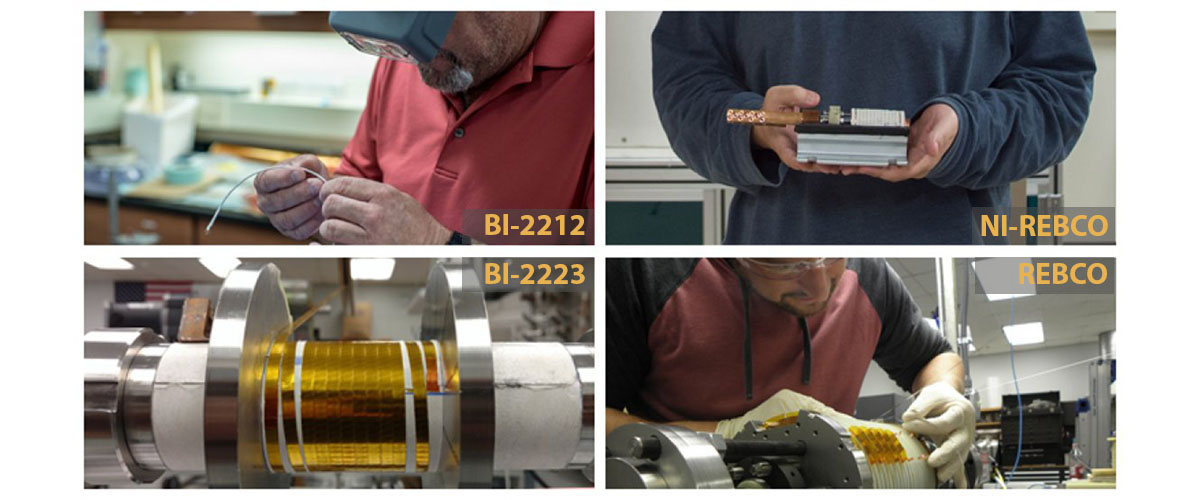In September 2018, the National Science Foundation (NSF) awarded $4.2 million to the National MagLab to launch a research and development effort for the next generation of high-field superconducting magnets. The goal is to create a magnet with a 34-mm bore and capable of generating a field of 40 teslas, which is 8 teslas stronger than the existing world-record superconducting magnet recently completed at the MagLab.
In this preliminary phase of magnet development, scientists and engineers at the MagLab are studying four possible approaches to building a new kind of magnet using high-temperature superconductors.
Superconducting magnets feature two increasingly important advantages over resistive magnets, including the MagLab's 45-tesla hybrid magnet. The first is their virtually limitless time at peak magnetic field. The MagLab's user community is finding it increasingly necessary to perform experiments at fixed high magnetic fields for extended periods of time while other experimental parameters are being tuned to probe the physical phenomenon of interest. This ability to "sit" at high fields is critical, for example, in spectroscopic studies that range from the traditional (optics and tunneling) to the more recently developed multiple-gate spectroscopies used to tune electron interactions in low dimensional materials. These and other experiments, like angular-dependence studies, pressure-dependence studies, and mapping of complex phase diagrams, often span a multi-dimensional phase space that demands long times at peak magnetic field.
The second advantage of superconducting magnets is lower experimental noise levels. Resistive magnet coils feature increased noise floors due to electrical noise coupled from the magnet’s DC power supplies and acoustic noise arising from cooling water that generates vibrations and microphonic voltages in experimental circuits. Many of the same experimental techniques listed above demand a quiet environment to develop sufficient experimental signal-to-noise, as do other techniques such as quadrupolar nuclear magnetic resonance (NMR) for condensed matter physics and state-of-the-art specific heat measurements on small samples.
Key research areas that would benefit from increased time at field and/or decreased noise levels to reveal new physics include:
- High-temperatures superconductivity
- Ising superconductivity
- Exciton condensation
- Non-Abelian quasiparticles
- Topological electron insulator
- Topological materials in the extreme quantum limit
- Mott/high pressure
The four technologies MagLab scientists are studying as possible approaches for building the magnet are:
- Insulated REBCO (rare earth barium copper oxide)
- Non-insulated REBCO
- BSCCO-2212 round wire (bismuth strontium calcium copper oxide)
- BSCCO-2223 tape
For more information on this project, please contact Hongyu Bai.



